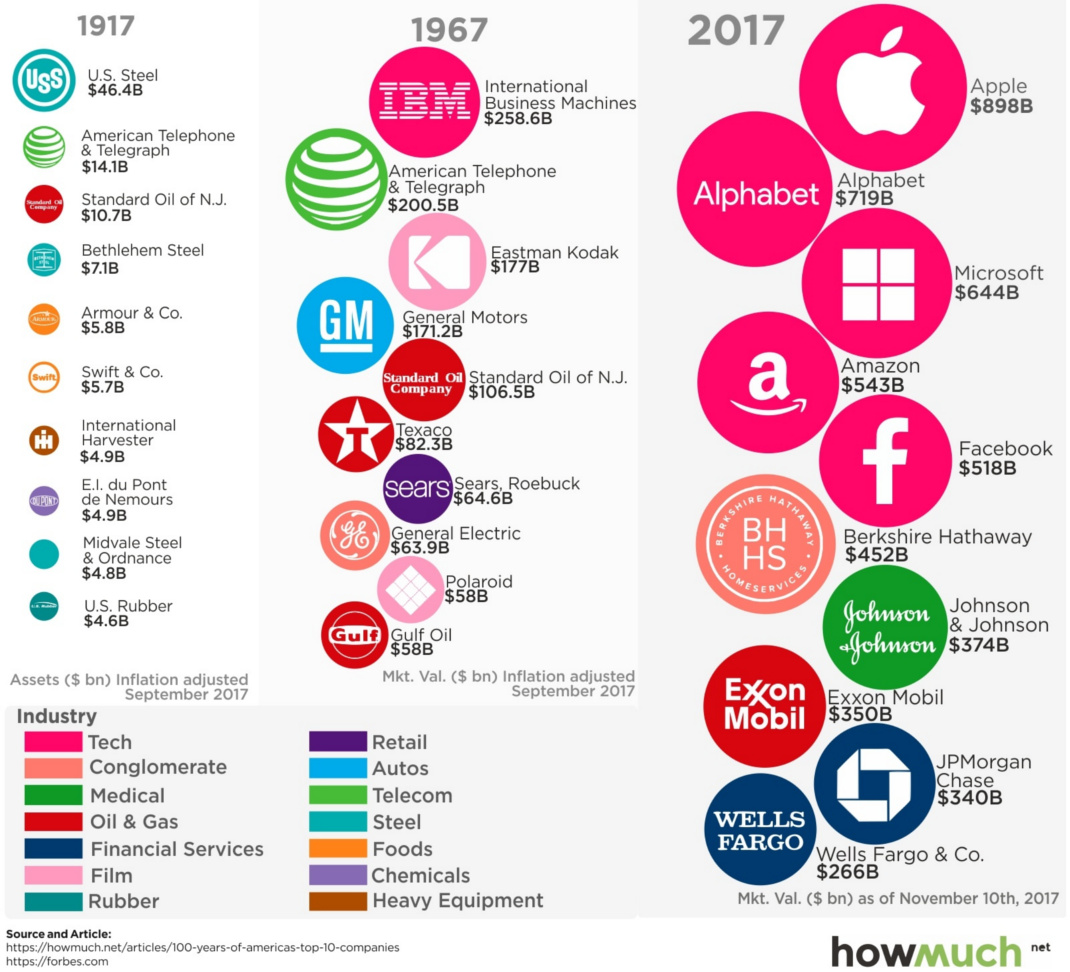 What if you could put your company through an MRI scanner to get a detailed picture of how well your processes work, see the bottlenecks, and understand the causes of delays, unnecessary costs, and lost productivity?
What if you could put your company through an MRI scanner to get a detailed picture of how well your processes work, see the bottlenecks, and understand the causes of delays, unnecessary costs, and lost productivity?
From Big Data Analytics to AI: Vodafone and Celonis Mine Data to Improve Business Processes
Digital Transformation: Most Valuable US Companies, 1917-2017
Emerging Artificial Intelligence (AI) Leaders: Rana el Kaliouby, Affectiva

Rana el Kaliouby
“Without our emotions, we can’t make smart decisions,” says Rana el Kaliouby. In the field of artificial intelligence, this is sheer heresy. Isn’t the goal of AI to create a machine with human-level intelligence but without the human “baggage” of emotions, biases, and intuitions that only get in the way of smart decisions?
Consumers Prefer Smartphones To George Clooney, Family, Friends, Even Sex
 Would you give up your smartphone for a month in exchange for a day with George Clooney or any other celebrity?
Would you give up your smartphone for a month in exchange for a day with George Clooney or any other celebrity?
If you answered “yes,” you are in a disappearing minority. Almost three-quarters of smartphone users worldwide refuse to substitute their artificial intelligence extension with a celebrity. 56% declined a 10% salary increase, 50% an extra week of vacation, 41% said “no” to $1,000 dollars (!), and 28% were willing to forego a holiday at their dream destination. They are also willing to give up family, friends or sex for a week before their smartphone.
430 AI Startups in Israel

The number of startups using AI technology has nearly tripled in size since 2014, and based on a three year average growth rate, 95 new AI startups are founded each year in Israel. Almost 300 startups were founded between 2014 and today, representing over 60% of all Israeli AI startups.
Source: Daniel Singer
Barriers to AI Adoption

Sloan Management Review: The gap between ambition and execution is large at most companies. Three-quarters of executives believe AI will enable their companies to move into new businesses. Almost 85% believe AI will allow their companies to obtain or sustain a competitive advantage. But only about one in five companies has incorporated AI in some offerings or processes. Only one in 20 companies has extensivelyincorporated AI in offerings or processes. Less than 39% of all companies have an AI strategy in place. The largest companies — those with at least 100,000 employees — are the most likely to have an AI strategy, but only half have one.






